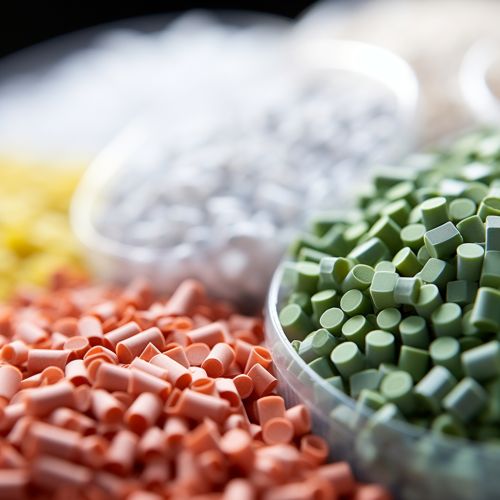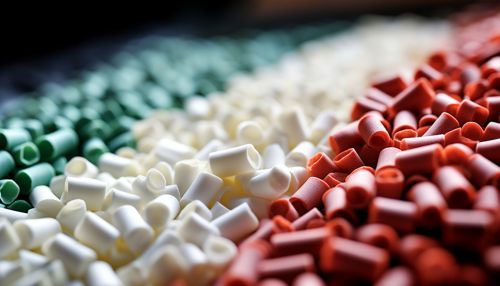Bioplastic
Introduction
Bioplastics are a type of plastic derived from renewable biomass sources, such as vegetable fats and oils, corn starch, straw, woodchips, food waste, etc. Unlike traditional plastics, which are derived from petroleum, bioplastics are obtained from sustainable resources and can help to reduce the dependency on fossil fuels. Bioplastics can be made from a variety of sources, including PLA, PHA, PBS, and others.
History
The concept of bioplastics is not new. In fact, the first man-made plastic, Parkesine, was a bioplastic made from cellulose. In the early 20th century, materials such as Cellophane and Galalith were developed, both of which were bioplastics. However, with the advent of petroleum-based plastics, the use of bioplastics declined due to their higher cost and lower performance. It was not until the late 20th century, with increasing environmental concerns and the realization of the finite nature of fossil fuels, that interest in bioplastics was renewed.


Types of Bioplastics
There are two main types of bioplastics: biodegradable and non-biodegradable.
Biodegradable Bioplastics
Biodegradable bioplastics can break down in the environment under certain conditions. They are often made from plant materials like corn starch, potato starch, and cellulose. Examples of biodegradable bioplastics include PLA, PHA, and PBS.
Non-Biodegradable Bioplastics
Non-biodegradable bioplastics, on the other hand, do not break down in the environment. They are often made from bio-based polyethylene and bio-based polyethylene terephthalate. These types of bioplastics are used in applications where durability and longevity are required.
Production Process
The production process for bioplastics varies depending on the type of bioplastic and the raw materials used. However, the general process involves the conversion of biomass into biopolymers, which are then processed into plastic using traditional plastic manufacturing techniques.
Production of Biopolymers
The first step in the production of bioplastics is the production of biopolymers. This is typically done through fermentation, where microorganisms are used to convert sugars into biopolymers. The resulting biopolymers are then purified and processed into a form that can be used in plastic production.
Plastic Production
The biopolymers are then processed into plastic using traditional plastic manufacturing techniques. This can include extrusion, injection molding, blow molding, and thermoforming. The resulting plastic can then be used in a variety of applications, from packaging to automotive parts.
Applications
Bioplastics are used in a wide range of applications, from packaging and agriculture to automotive and electronics. The use of bioplastics is growing rapidly, with the market expected to grow at a compound annual growth rate (CAGR) of 14.5% from 2020 to 2027.
Packaging
One of the most common applications for bioplastics is in packaging. Bioplastics are used in a variety of packaging applications, including food packaging, cosmetic packaging, and pharmaceutical packaging. They offer a number of advantages over traditional plastics, including reduced environmental impact and improved product shelf life.
Agriculture
Bioplastics are also used in agriculture, where they are used in applications such as mulch film, seed coatings, and controlled-release fertilizers. Biodegradable bioplastics are particularly useful in these applications, as they can break down in the environment, reducing waste and improving soil health.
Automotive and Electronics
In the automotive and electronics industries, bioplastics are used in a variety of applications, including interior components, exterior parts, and electronic casings. Bioplastics offer a number of advantages in these applications, including reduced weight, improved performance, and reduced environmental impact.
Environmental Impact
The environmental impact of bioplastics is a complex issue. On one hand, bioplastics can help to reduce the dependency on fossil fuels and reduce greenhouse gas emissions. On the other hand, the production of bioplastics can have significant environmental impacts, including land use changes, water use, and pesticide use.
Advantages
One of the main advantages of bioplastics is their potential to reduce greenhouse gas emissions. Because bioplastics are made from renewable resources, they can help to reduce the carbon footprint of plastic production. In addition, some types of bioplastics, such as PLA, can be composted, reducing waste and further reducing greenhouse gas emissions.
Disadvantages
However, the production of bioplastics can also have significant environmental impacts. The cultivation of crops for bioplastic production can lead to land use changes, deforestation, and loss of biodiversity. In addition, the production of bioplastics can require significant amounts of water and energy, and can result in the use of pesticides and fertilizers, which can have negative environmental impacts.
Future of Bioplastics
The future of bioplastics looks promising, with advancements in technology and increasing awareness of environmental issues driving growth in the market. However, there are also challenges to overcome, including the environmental impacts of bioplastic production, the cost of bioplastics, and issues related to end-of-life management.
